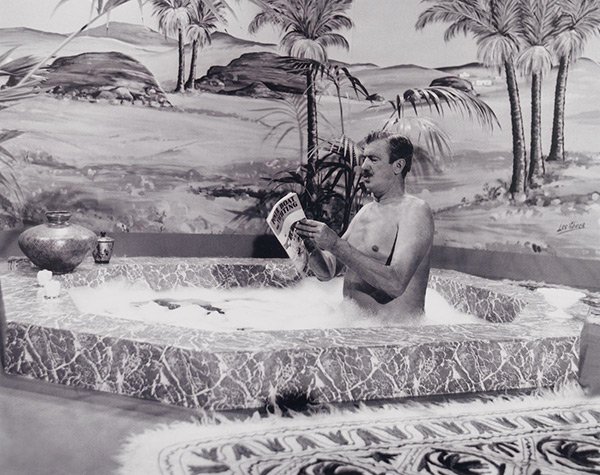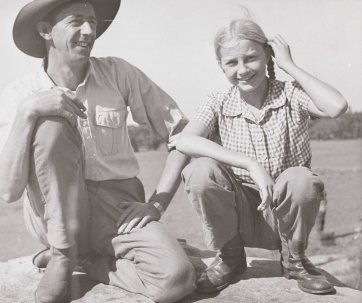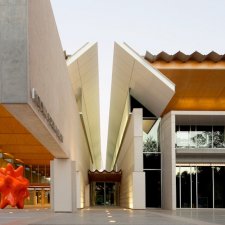Chips Rafferty MBE (1909–1971), screen actor, was born John Goffage in Broken Hill and nicknamed 'Chips' as a boy. He worked in a number of jobs including as a shearer, miner, drover and pearl diver before making his film debut in Dad Rudd, M.P. (1940). Director Charles Chauvel saw his potential and cast him in a lead role in Forty Thousand Horsemen (1940), for which he adopted the screen name Chips Rafferty. The success of the film brought him to public attention. A year later, during the Second World War, Rafferty enlisted in the Royal Australian Air Force. He was released to act in propaganda films for the Department of Information, including The Overlanders (1946), which was a hit in Australia and in Britain. Rafferty made a foray into Hollywood for The Desert Rats (1953), and was briefly marketed as Australia's answer to Cary Grant, but he was more in his element playing the lean and laconic bushman. Variations on this character appear throughout Rafferty's career, and his films contributed to the popular notion of Australian masculine identity: The Rats of Tobruk (1944), Bush Christmas (1947), Eureka Stockade (1949), Kangaroo (1952), Smiley (1956), Smiley Gets a Gun (1958), The Sundowners (1960) and They're a Weird Mob (1966). His final film was the classic Wake in Fright (1971), filmed in his hometown of Broken Hill.
Collection: National Portrait Gallery
Gift of Jozef Vissel 2011
© Jozef Vissel
The National Portrait Gallery respects the artistic and intellectual property rights of others. Works of art from the collection are reproduced as per the
Australian Copyright Act 1968 (Cth). The use of images of works from the collection may be restricted under the Act. Requests for a reproduction of a work of art can be made through a
Reproduction request. For further information please contact
NPG Copyright.


















